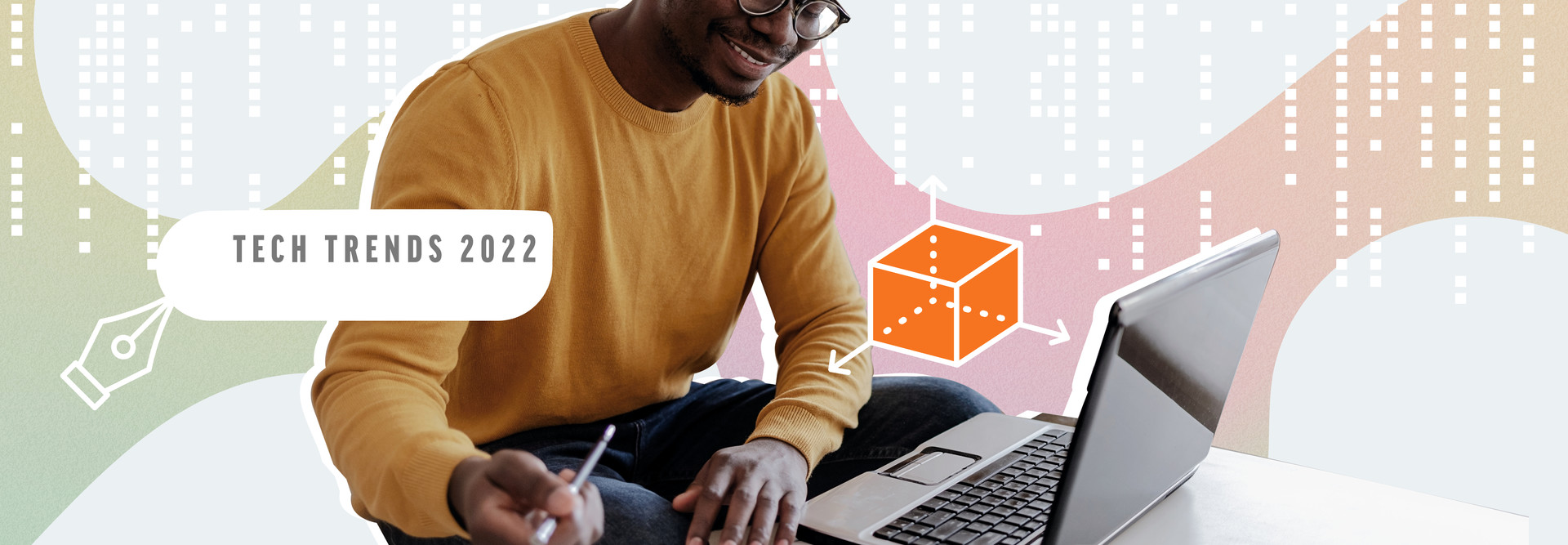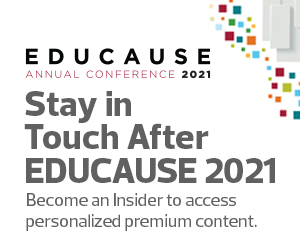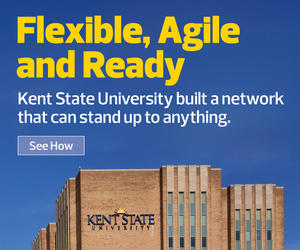Each year, EDUCAUSE releases its list of top IT issues for the coming year. Last year’s look forward considered the unpredictability of the pandemic and shifted the way the panel approached the trend forecast. This time, however, higher education institutions have a better handle on the effects of the pandemic as the past two years have accelerated digital transformation in higher education.
At this year’s EDUCAUSE conference, Susan Grajek, vice president of partnerships, communities and research for the organization, presented its Top 10 IT Issues list for the upcoming year, with input from a panel of higher education leaders. This year’s focus was on defining the higher education students and teachers deserve and determining the technology steps needed to get there.
FIND OUT: What other tech trends will influence higher ed in 2022?
“Each leader defined the new higher education a bit differently, but all recognized that the higher education we deserve cannot be created without technology,” Grajek said in her conference presentation. “In fact, for the first time ever, most leaders spoke of technology not as a separate set of issues but as a driver and enabler of — and an occasional risk to — their strategic agenda.”
The list is broken into three sections, beginning with developing a shared vision and strategy that guides an institution’s digital transformation. At the center is the student experience, with trends addressing student success, equitable access to technology and enabling creativity. Finally, institutions working toward a goal of sustainability should have a technology-enabled business model that operates efficiently and effectively manages risks.
Approaching Digital Transformation with a Common Goal
Collaboration is key in developing an effective digital transformation plan. Rather than focusing on departments’ individual areas of growth, work must be done for the entire institution. This means making larger changes within the organization that all work toward achieving the greater goal.
“Digital transformation is helping institutions retire old ways of thinking and working in order to harness technology to transform institutional outcomes,” Grajek said. “Institutions need to build the foundations of digital transformation through shifts in their culture, workforce and technology.”
MORE ON EDTECH: John O'Brien on using DX as a springboard to strategic IT.
The IT issues that can reveal ways for institutions to reach common goals for 2022 are:
Evolve or Become Extinct: Institutions must accelerate digital transformation to improve operational efficiency, agility and institutional workforce development.
The Shrinking World of Higher Education or an Expanded Opportunity?: Post-COVID-19 institutional visions and value propositions must be enhanced by technology.
Student Success Is Institutional Success
To create the higher education we deserve, students must be seen as the primary customers of higher education institutions. Institutions must adapt and optimize their services to meet student needs, diverse as they may be.
“For the first time ever, the list looks at students as more than learners, as more than customers who need services, but as people with rights, dreams and fears,” Grajek said. The top IT issues for 2022 are shaped around “creativity, equity, individual needs and preferences, and mental health.”
MORE ON EDTECH: Four barriers to achieving digital equity in 2022, and how to overcome them.
The IT issues centering student success are:
Digital Faculty for a Digital Future: Faculty should have the digital fluency to provide creative, equitable and innovative student engagement. Equitable teaching and learning should work for all individuals, not just the majority.
Learning from COVID-19 to Build a Better Future: Student-centric and equity-minded technology systems can be produced through digitization and digital transformation.
From Digital Scarcity to Digital Abundance: Equitable access for students can be achieved by investing in connectivity, tools and skills. This responsibility lies with the institution, not the learner.
Radical Creativity: Giving students tools and learning spaces that foster creativity and collaboration can help them prepare for the future.
Watch EdTech's exclusive interview with Susan Grajek, discussing the top IT issues of 2022.
The Sustainable Institution: Risk Management Is Key to Sustainability
For an institution to be truly sustainable, there must be effective risk management and mitigation measures in place.
“Cybersecurity threats and incidences are increasing globally,” Grajek said. “They’re becoming more difficult for users to recognize and for cybersecurity programs to detect. One incident can cause loss of reputation, loss of educational opportunities for students, as well as financial and reputational issues for both the campus and for the people whose data is involved.”
EXPLORE: What is the difference between security, privacy and confidentiality?
Data security, emergency preparedness and hybrid workspaces can all go a long way in creating a sustainable higher education technology environment. The IT issues that work toward ensuring institution sustainability are:
Cyber Everywhere! Are We Prepared?: Data security and supply chain integrity can be protected by developing processes, controls, institutional infrastructure and workforce skills.
The Digital or Brick-and-Mortar Balancing Game: By providing digital and in-person work and learning spaces, institutions can facilitate and support hybrid work and learning models.
Weathering the Shift to the Cloud: Cloud and Software as a Service strategies can reduce costs and maintain control.
Can We Learn from a Crisis? Technology can help institutions mitigate risk in times of crisis, reducing the dependence on a physical campus. Creating an actionable disaster preparation plan can help capitalize on pandemic-related changes and investments.
Click the banner below to get a free checklist on preventing and remediating zero-day exploits.
Achieving the Higher Education We Deserve Means Moving Forward
Colleges and universities with long, successful histories often fall into the trap of doing what they’ve always done because it works, Grajek said in her presentation. But in today’s new normal, the status quo might not be enough. Institutions should work toward creating new legacies as technology, risks and student needs all continue to evolve.
“We owe a greater debt to the future than we do to the past,” Grajek said. “Our learners need us to prepare them for the future, not the past. We owe it to every student who aspires to attain a degree as the basis for a better life to help them do just that.”
Find more EDUCAUSE 2021 coverage, including interviews and advice from higher ed experts.















